#spanish bullfighting pride
Explore tagged Tumblr posts
Text
10 random facts about Spain you might wanna know for your fan work
My Hetalia hyperfixation came back this 2025 and it's stronger than ever. So to celebrate, I decided to make this post to share with you a little bit of real contemporary Spanish culture and to debunk some stereotypes. If you're writing or creating art about Spain this might help you add some details that will make the character, as well as his relationships with other nations, feel more authentic.

#1. We have two surnames, not a compound one (so it's "Fernández Carriedo", not "Fernandez-Carriedo"). I explained how that works in a post some years ago.
#2. We don't really drink sangría when we go to bars. It's considered a thing for tourists, especially considering how much they can charge you for it. Instead of that, we drink tinto de verano which is a mixture of red wine and either sparkling water or sparkling lemonade (usually the second one). When we do drink sangría, it's usually at a house or student delegation party and the methods we use to prepare it are usually not... very clean or sophisticated. It’s usually just cheap wine mixed with soda, with some chopped fruits thrown in, and it’s often made in a large plastic tub or basin without much concern for presentation or hygiene.
#3. Likewise, the dish that we like the most isn't paella, but tortilla de patatas. You'll find a plate of tortilla in every household when it's time to watch a football match, celebrate a birthday or watch the Eurovision grand final. Also, the only thing this tortilla has in common with the Mexican one is the name.
#4. The olive oil stereotype is way more accurate than the tomato one. We put olive oil in everything. Though if you wanna combine both stereotypes, most Spaniards love to have a toast with tomato pulp, olive oil and salt, either as breakfast or as a snack. The name and preparation of this toast can have slight variatons from region to region.
#5. Most Spaniards don't like bullfighting and even advocate for it to be banned. According to this survey, only 24% of Spaniards like bullfighting and it's usually those amongst the older generations. We usually consider the bullfighter stereotype to be offensive but we also think the imaginery slays (no pun intended) with fashion designers such as Palomo Spain using it in their works (this is the costume he designed for our entry in Eurovision 2022). It's kind of contradicting so take this information as you will. But basically: killing bulls, NO; pretty and shiny costumes, YES.

#6. According to a survey, Portugal (#1) and Italy (#2) are the two countries most liked by Spaniards. According to another survey, those two countries along with Greece would be the ones we'd be the most willing to help in case of a crisis. Can't tell if it's reciprocated, but according to every Spanish student's Erasmus experience ever I would say yes! (If you're not European and don't know what Erasmus is, look it up. Might be useful for a college AU). Also, there seems to be a rise in the idea of Mediterranean/southern European/PIGS pride among youths of any political inclination, often making memes like this one, which may or may not be related to the data I just provided. I'd say we consider the Portuguese to be our siblings, Italians to be our cousins (though cuanto más primo, más me arrimo jk) and Greeks to be our distant cousins.
#7. The "th" sound in the neutral European Spanish dialect (the one you hear in movies and shows) isn't a lisp, but a phenomenon linguists call diferenciación. If anyone wants me to explain this in detail, I'll gladly make a separate post about it. If you don't know how it works I suggest you don't use it in fics and stuff because we will point and laugh at you. Especially considering some provinces in Spain only pronounce the S sound, just like Latin Americans.
#8. Though Enrique Iglesias is great, he's not the most popular singer in Spain at the moment, especially since he's retired from music. Spanish girls and gays usually listen to Rosalía, Ana Mena, Lola Índigo or Belén Aguilera, amongst others. Straight people usually listen to Quevedo (ew). David Bisbal was very big in the 2000s and he's still universally loved by all, whether we actually like his music or see him as a living meme. Collaborations with Latin American artists (examples 1, 2, 3) are also very popular and collaborations with Italian artists are becoming increasingly popular (examples 1, 2, 3). I have a playlist of Spanish pop artists (mostly women) that you can check here. If your fic or artwork is set on the 20th Century, you might wanna check this playlist instead. And here's another one for Spanish classical composers.
#9. Doraemon and Crayon Shin Chan are a cultural staple amongst Spaniards raised in the late 90s-2000s-early 2010s. So much so, that there's even an episode of Crayon Shin Chan in which the Nohara family goes to Spain on vacation. I've bonded with Japanese people over this lol
#10. We typically don't use the word "gringo" to refer to USAmericans (though it's becoming more popular now since younger generations are more used to hearing Latin American slang because of both the Internet and recent migrations), we use "guiri" instead. This word is used to describe people who are whiter than us, for lack of a better explanation. So, basically, Central Europeans + Nordics + Brits + USAmericans + Canadians. Like most words in Spanish, it can be considered either a neutral descriptor or a pejorative term depending on the context and intonation. For example, if a Spaniard has an English or German partner, they may call them "mi guiri" (my guiri) as a light-hearted tease. However, if we're talking about drunk English tourists jumping from balconies... then yes, it's definitely pejorative.
I'd love it if anyone else in the fandom does this with facts about their country because I love learning new things about other cultures and peoples. So if you write a post like this, please tag me so I can read it! Also if you want me to confirm or debunk any stereotype let me know and I'll do it in the comments.
Bonus fun fact: Spain is the gayest country in Europe (based on the percentage of people that identify as LGBT+).
#wrote this while commuting yayyyyy#kind of inspired by a conversation i had with international friends yesterday#hetalia#hws#hws spain#aph spain#antonio fernandez carriedo#hetalia fanart#aph#hws hetalia
131 notes
·
View notes
Text
FFI EURO B COACHES - Julio Del Bosque (Red Matador 🐂)

Back on his childhood, Julio dreamt of becoming an actor. But when losing a youth beauty contest to a charming Pepe Banderas, a part of his broke forever. At least it made him settle with soccer as his future. His overall career had been good enough, even getting to play few adult world cups. Without glory nor pity he played and later retired. Now, this is where he would just become into history as "yet another spanish player", but...
When the Alius menace hit the world, the spanish were torn on how to deal with it. Should they intensize the training of their youth, like the german or english, or should they keep calm like the french or italian? After a huge debate that even involved the spanish royals, things were set. They pretty much let the whole thing to be determined by each autonomous community and their provinces. Many parts of Spain such as Catalonia and Galicia didn't saw much to worry about, but other were more intense, such as Madrid or the Basque Country. So each community's experience ended quite different.
Nonetheless, there was only one way to prove how effective said choices had turned into, and that was by the creation of the Spanish Community Cup. Until now, tournaments had been only with soccer clubs (Spanish Youth League) often concentrated on few locations, but now it was something that'd involve the entire country. Although adults took the chance to create all sorts of controversies from it, the tournament went well, with Navarre (Querardo and Samuel) being the one to hold the cup.
Before the FFI Julio had been a coach twice, first being the coach of the soccer club Gran Madrid -Where David plays in- and later on the team representing the spanish capital. Almost getting a second win post-SYL if it wasn't for Navarre, his performance still charmed the higher ups enough to make him the coach of the national selection; and even more after the navarrese one refused the offer. And so he remained being Red Matador's coach across the Euro League + Qualifiers + Liocott, even if it had quite lots of ups and downs. And controversies. LOTS of controversies.
Julio's most important role however turned out to be on keeping an eye on the Toro Blanco, a mysterious masked figure who started to torment the team. Perhaps an "anti-bullfighting" activist who opposed what the team stood for. At first Julio had a complete adversion towards him, calling him an "annoying hippie" and a menace to his players plus his reputation as a coach. However, and similarly like Querardo, he did start to warm up to the Toro soon enough, now welcoming its usual apparitions in Liocott and considering yet another piece of the great spectacle that was Red Matador as a team. In fact, his liking of Toro Blanco grew so much, that he soon started to approach the dancer with joining the team.
"You don't have to take off your mask, your enigma is what makes things so special! All you have to do is put on the uniform!"
But no matter how many times he tried, Toro Blanco never accepted to represent under Spain, always pointing out their dislike of the team's motif. If Julio wasn't willing to cooperate and change it, why wouldn't they either?
I think that with his boys, Julio's relationship is mostly fine. He's a man full of passion who truly takes seriously the idea of representing a nation. Though instead of "pressure" from carrying the hopes of the represented, his and RM's pride stems from straight up love and admiration for the country they play as. Del Bosque himself doesn't neccesarily bring out any of his boys down nor their skills outside of soccer, and in fact he loves to see them shine outside of trainings.
However, we should also address a huge elephant on the room: If it wasn't clear before, Julio Del Bosque is a huge, HUGE fan of bullfighting; and an unapologetic one at that. He feels no shame on such an "important tradition" being choosen to represent Spain in the world of soccer, and he even likes to apply few bullfighting knowledge on his tactics and the team design. But besides the act itself, Julio's is also a fan of many "matadores"... Including Querardo's father, León Naval. In fact that's his favorite, so imagine Julio's reaction to having none other than León's son in the team. Whenever Querardo its as his worst, Julio won't waste the chance to remind him WHO is he the son of, and what he should be doing as a future matador, blah blah blah. Needless to say their relationship will always be rather complicated, and the more Que proves himself to NOT be worthy as a future matador, the more dissappointed Julio becomes of him.
And as for Peroqui, the ONLY player from the two teams he used to coach... Things are also complicated, specially with Julio's choices on who to represent spain. If things weren't that great during Gran Madrid, they are not improving at all since RM's formation. On Julio's defense, he believes that giving the captain band to someone else will help to calm Davi's rabid temper... Or so he hopes.
#inazuma eleven#red matador#hc:ina11#OC:Julio Del Bosque#David Peroqui#Querardo Naval#God help these poor spanish children
3 notes
·
View notes
Photo

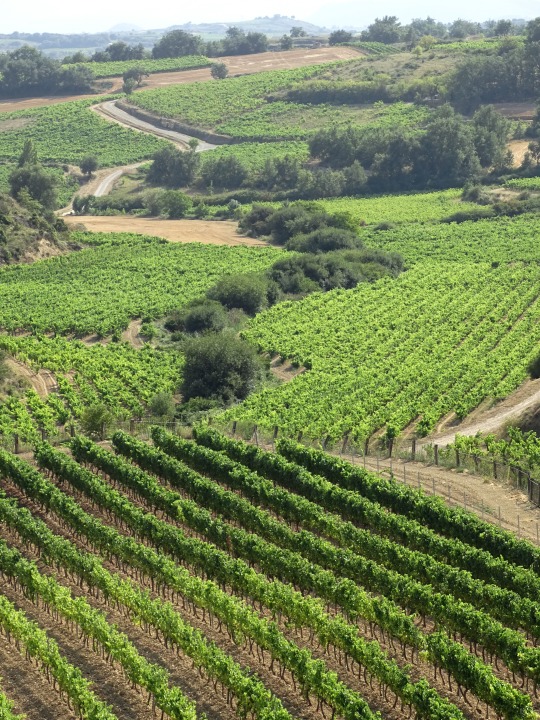

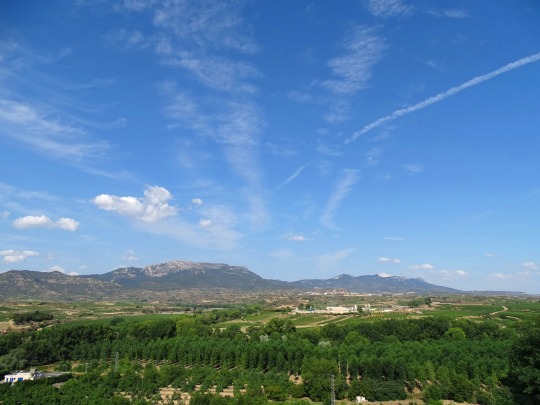

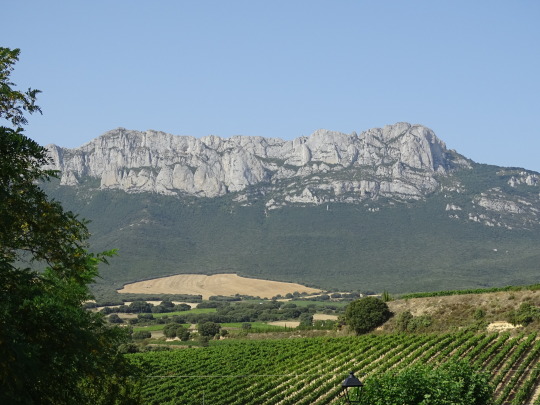
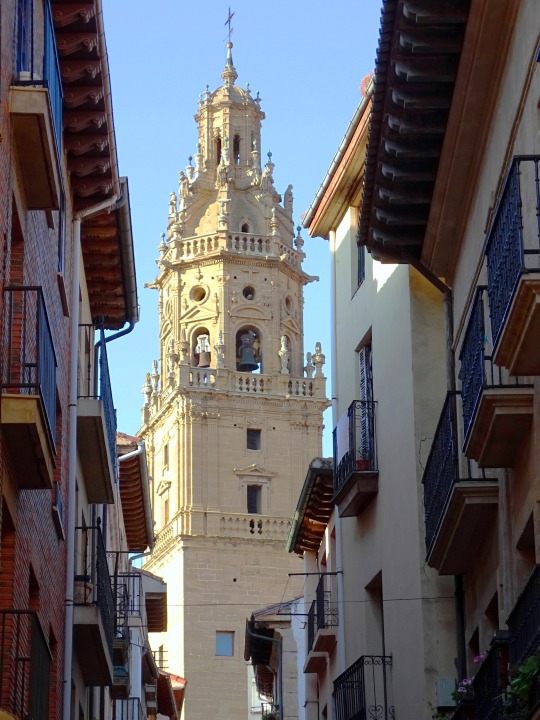
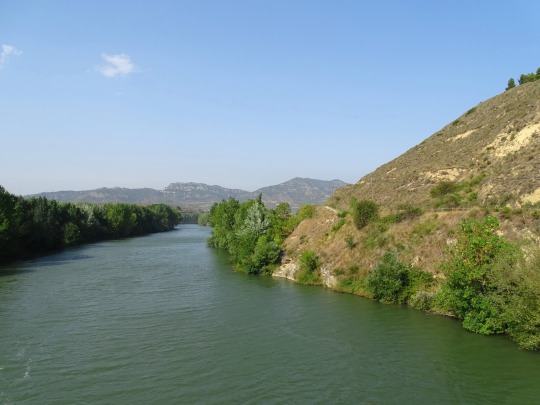

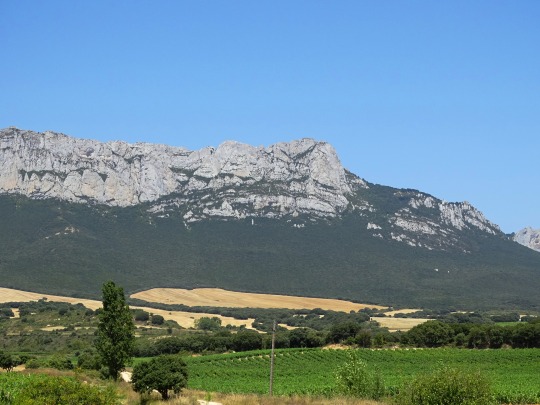
Day of La Rioja
Day of La Rioja is a public holiday in La Rioja, Spain, and is celebrated on June 9 every year. It marks the anniversary of when the autonomous community of La Rioja’s statute was approved in 1982. This beautiful picturesque region is known for its lip-smacking red wine and boasts of over 500 wineries. We firmly believe that there is no such thing as too many wineries but 500 sounds like a good number. The day is celebrated with full vigor in the region by organizing various events including exhibitions of works produced by local artists, traditional and modern music concerts, sports events, and, of course, cooking up some great dishes and washing them down with the world-famous La Rioja wine.
History of Day of La Rioja
The history of La Rioja is marked by territorial disputes and invasions. The territory of La Rioja was inhabited by the tribes of the Berones, Autrigones, and the Vascones during Roman times, while in Medieval times, it was often a disputed territory. After a Muslim Invasion in 711, La Rioja fell into the Muslim domains of Al Andalus. This was followed by more disputes and invasions, which were then followed by — you guessed it — even more disputes and invasions.
The territory was divided between the provinces of Burgos and Soria as recently as the 19th century. Even France had its say. Napoleonic forces took over the region during the Peninsular War, keeping it with the French till 1814.
Historically, La Rioja formed part of different provinces in the area but became its own province in 1833. It was called the Province of Logroño. The province was renamed La Rioja in 1980, although Logroño is still the capital city.
Today, this community forms the least populated region of Spain with over 300,000 inhabitants. It also has its own flag with the colors red, white, green, and yellow. The residents of this region take a lot of pride in their land. Other events like the Vendimia Riojana are also celebrated in the region. It is held during the third week of September in Logroño to celebrate the grape harvest with festivities, including a parade of carts and bullfights.
Day of La Rioja timeline
1550 B.C. The Iberian Peninsula
The Bronze Age begins and the El Argar civilization starts to form.
19 B.C. The Romans Take Over
Spain falls under the Roman Empire.
1479 The New Kingdom is Formed
The Kingdom of Spain is formed when Ferdinand and Isabella become king and queen.
1931 Spain As We Know It
Spain becomes a republic.
Day of La Rioja Activities
Visit La Rioja
Bring Spain home
Treat your friends
Take a trip to La Rioja to see the festivities for yourself. Bask in the Day of La Riojaculture, food, and wine that makes this region so unique.
If you cannot visit La Rioja, then bring Spain to your home. Cook up some delicacies from La Rioja like Patatas a la Riojana, beef, or pork cheeks in Rioja red wine sauce and white asparagus.
Call your family and friends over and treat them to some delicious food made in La Rioja style. Open up a bottle of wine while you are at it.
5 Facts About Spain That Will Blow Your Mind
Spanish is widely spoken
The world’s first global empire
The world’s oldest restaurant
Spain has a tooth mouse
More bars than anywhere in Europe
Spanish is the world’s second-most spoken native language.
The Spanish traveled across the world and left their mark on the Americas and also controlled the Philippines for over 300 years.
Madrid has the oldest restaurant in the world, El Restaurante Botin, which was opened in 1725.
Spain has a unique version of the popular mythical tooth mouse called ‘Ratoncito Perez.’
Spain has the highest number of bars compared to other countries in Europe.
Why We Love Day of La Rioja
The Spaniards know how to have fun
They make some great art
It is beautiful
We love any reason to have a celebration! La Tomatina and the Haro wine festival are just some of the popular festivals held in Spain.
Some of the world’s most famous painters including Pablo Picasso, Salvador Dali, Goya, El Greco, and Velázquez all came from Spain. There is nothing better than appreciating a good work of art.
It does not matter if you are into food, wine, beaches, history, art, or architecture — Spain has it all. Spain is such a popular country that in 2018 the country had more visitors than the number of people who live there!
Source
#San Vicente de la Sonsierra#Haro#puente medieval#medieval bridge#Spain#Bodegas Roda#Ebro River#Church of Santo Tomás#La Rioja#vacation#travel#Basilica of la Vega by Bernardo de Munilla and Juan de Villanueva#Day of La Rioja#DayofLaRioja#9 June#original photography#summer 2021#landscape#cityscape#countryside#vineyard#architecture#mountains#España#Northern Spain#Southern Europe
2 notes
·
View notes
Text
I don't know what vi khi nao is talking about heart condition and whether or not she was a voracious lover......i think cherimoya was from the midwest and to afford the anti semitic ideation of the Iowa low middle class fantasy...she had habits for ku Klux klan members....its bartender like to refuse to wash ones ass.....he bites....then...he would want to bite her
The feminine origin because it stings a little bit to wash.....whats with people not strong enough to acclimate that ....all religion has a relieve africa of tribal terror origin
Writer awards and a woman who just supports one...vi khi nao was in a ku Klux klan members space
Some feminists feel the idea that the world was priorly a feminist one had to do with americanism migrating north of the Canadian border and putting indigenous children in schools.....if its Indian women Hindus still have their robes
I think the book is about her experiencing anti semites till she really needs to be far north with anti American therapies....
Dogged around....that African lady never goes around north American black men or she would be called shit
Jackie Onassis Kennedy about her aunt and cousins house of poverty.....it was her brother's so everything in the room kept as his or contagious
The Asians can't practice the Africans stuff about deliberately causing the blood to coagulate....the Asians cannot have bleeds people around them
White people are more tolerants of African invasions so we don't have to just leave
I mostly fantasize about holding EMTs hands and making them promise me that they love God though
I can't understand anyone that desires really really smelly unless it's men that can tolerate weight loss.....
Nathan Bedford Forrest on military care if military men their always so Spanish bullfighter like and always are too low fat to be as gross as military is suspected of
Military does kind of act promiscuous but in the end their always protestant phobic types that want everyone to like them
They told us port saint Lucy was under another hurricane and I missed getting to go.....everything common under storms looks like everyone receiving their laurels and pride as not just another lost generation....
If it's storms you can really like people again....
I survived a hurricane in port saint Lucy by sitting on the front concrete in front of a Laundromat in a strip mall....
It was actually really quiet and polite and you could watch the vegetation by that river or inlet not all that bothered by the winds and rain....floridans still have the last natural wet lands with magnesium in the air because storms relieve people of obsessional construction
Nuclear droughts are what is truly terrible and cruel about the states and worse then the rest of the world
And God gave Noah a rainbow but warned him now man against man the truly worst
They assured us storms are worse then here.....but I don't know...if I walk to the library I get threatened with a head on hit over their car hood at least three times
I think it's true that a lot of stuff was white people's and multi culturals try to use illegals things
The Hindus show me that they will leave though....
I had no idea Timothy mccvay had such a multi cultural following until jhumpa lahiri on anti states policy in India
0 notes
Text
This Week’s Horrible-Scopes
It’s time for this week’s Horrible-Scopes! So for those of you that know your Astrological Signs, cool! If not, just pick one, roll a D12, or just make it up as you go along. It really doesn’t matter. Better yet! Check out “Heart of the Game, Fredonia” and see if they can sell you those D12’s with the symbols on them. Tell them “Shujin Tribble” sentcha. And “Hail, Hail, Fredonia!” Home of the Blue Devil!
Someone, and we’re not naming names here, someone is really trying to challenge me with suggestions for the ‘Scopes; trying to stump me with topics. WELL! Just to prove that I refuse to be stumpified let’s launch into this week’s suggested topic: HATS! So hold on to yours because it’s time to duel!
Aries
Hey, Ladies! Let’s give you something classy as all hell. You might not know it by the name, “Cloche hat”, but you’ll know it on sight. It’s a bell-shaped woman's hat that was popular during the Roaring Twenties. So This Week… Head to a 2nd-hand shop and try on a Flapper Dress, but with two warnings. First, it’s heavier than you think it’ll be. And Second… it’s gunna cost more than you think it will.
Taurus
We’re taking you to a hard felt hat created in 1850 by Lock's of St James's, the hatters to Thomas Coke, 2nd Earl of Leicester, for his servants. So, yeah! You’re getting a hat fit for “The Help”. Commonly known as a “Derby” in the United States, your hat is also the name of a legendary restaurant. So This Week… Re-watch the old “Little Rascals” films and look for the kid with the bowler hat. That would be Stymie Beard. That hat? It was a gift from comedian Stan Laurel - of “Laurel & Hardy” fame! So you wear yours with PRIDE!
Gemini
JUST for you, we’re taking you to school. Specifically to Italian class. “Da Cappo” in Italian means “The Hat”, but it’s better than that. It’s a Musical Term, meaning once you get to this point, go back and start at the beginning all over again. So for This Week… You’re being challenged to pick up that first instrument you learned in third grade and try to play something again. Unless it was a recorder, in which case you’re off the hook.
Cancer Moon-Child
You’re getting a pretty famous hat, though you might not know it by name. Known as the "Smokey Bear" hat, it’s a broad-brimmed felt or straw hat with a high crown, pinched symmetrically at its four corners - what’s known as the "Montana Crease". Your hat is officially known as the “Campaign Hat”. So This Week… Remember; “Smokey the Bear” was named for "Smokey" Joe Martin, a New York City Fire Department hero who suffered burns and blindness during a bold 1922 rescue. So when you put on your hat, give it its proper reverence.
Leo
Let’s take you all the way back to the Bronze Age and give you a Beret! Sure, in modern times you could look like a military person, but really you’ve got one of the oldest designs of lid-wear. So This Week… Don’t try to wear it as a cold-weather hat. It’s just going to blow right off your head. Unless you buckle it tighter. REALLY tight!
Virgo
You know, all these hats that everyone knows by sight but almost never by name. Virgo, do you know what a “Bobby” is? It’s what they call a constable in the UK. So you’re getting the “Custodian helmet”. Yes, it’s a helmet, but that’s still a hat. So This Week… Do NOT learn how to speak with a British Accent from ‘Mary Poppins’!
Libra
Oh, we’re gunna screw you up hard with this one. Surprisingly enough it could be found in some of the Southernmost Islands of Japan. It's called the “Montera” - a crocheted hat worn by bullfighters. Yeah! Bullfighting was a THING in Super-South Japan thanks to Spanish Settlers. Bet you didn’t know that. So This Week… Watch Bugs Bunny be a bullfighter and remember you can’t do that! He’s a toon, you're not. Stick to Mechanical Bull Riding.
Scorpio
You’re getting an Australian favorite, believe it or not. It’s a bush hat with a wide brim known as the “Akubra”. It’s a distinctive part of Australian culture, especially in rural areas these days, and if you pair it with an oiled canvas riding jacket, you WILL be the sexiest person in that county. So This Week… See if the Driza-Bone company can ship a Rider Heritage Coat to your country yet.
Sagittarius
Are you going to be in a production of The Pirates of Penzance? No? Then you’re gunna look weird wearing a Pith Helmet. But we’re pretty sure you know how to find a rhyme for the term, “Hypotenuse”. So This Week… Learn the lyrics from “Major General”. You’re just dorky enough to remember it later.
Capricorn
It don’t get much more “Olde Timey” than this! You’re going to be wearing A seamen’s hat. No, it’s not what you think. Your hat, called the “Boater”, is a flat-brimmed, flat-topped, straw hat, formerly worn by public school students in the UK as part of their summer uniform. So This Week… since you won’t be going to a regatta or formal garden party this week, find a 1920’s schoolboy uniform to wear with it… Get a Gibson SG guitar and play “Thunderstruck”!
Aquarius
We’re gunna make a really strong suggestion: ONLY wear yours when you go in snow events. You’re getting a Balaclava. We don’t need to describe what it looks like other than to say, “If You Want To Rob A Bank, THIS Is The Hat You Want To Wear.” So This Week… Remember, you are NOT allowed to use money you’ve stolen to post bond for yourself. So just hit the ski slopes instead.
Pisces
If we say “Grandma”, or “Brrr!”, or “Eh?” what do you think of? That’s right - a stretched out sock, pulled over your head, known in Canada as.. The “Toque”. The worst part of it all is that Americans can’t seem to either pronounce it or spell it correctly - and maybe that’s for the best. So This Week… Learn to sing the PBR song from “Strange Brew!”
And THOSE are your Horrible-Scopes for this week! Remember if you liked what you got, we’re obviously not working hard enough at these. BUT! If you want a better or nastier one for your own sign or someone else’s, all you need to do to bribe me is just Let Me Know - or check out the Ko-Fi page ( https://ko-fi.com/icarusthelunarguard )! These will be posted online at the end of each week via Tumblr, Twitter, Facebook, Discord, and BLUESKY.
0 notes
Text

640x927 Toro bravo saliendo al ruedo: la razón de ser del toreo, arte y fiesta. España es taurina, por tradición y cultura.
64 notes
·
View notes
Video
youtube
“Los diez Pasodobles Taurinos más bonitos” según Toros Y Pasodobles:
- “Gitanillo de Triana” (de José Franco y Ribate), por la Banda Municipal de Música de Bilbao.
- “Gitanería Andaluza” (de Pablo Cambronero), por la Banda Sinfónica Municipal de Madrid.
- “España Cañí” (de Pascual Marquina Narro), por la Banda de Música “Nuestra Señora de la Oliva” de Salteras (Sevilla).
- “Frascuelo” (de Eduardo López Juanranz), por la Banda de la Academia General Militar, con sede en Zaragoza.
- “Eduardo Gómez ‘Gallo’” (de Juan de Orúe), por la Banda Municipal de Música de Bilbao.
- “Juan Leal” (de Juan Garín), por la “Harmonie La Nèhe”.
- “Agüero” (de José Franco y Ribate), por la Banda Municipal de Música de Bilbao.
- “Puerta del Príncipe” (de Javier J. López Padilla), por la Banda de Música de Alcalá de Guadaira (Sevilla).
- “Pepín Martín Vázquez” (de Emilio Caballero), por la Banda Municipal de Música de Bilbao.
- “La Giralda” (de Eduardo López Juarranz), por la Orquesta “La Torería”.
64 notes
·
View notes
Photo
Bullfighting, Spain!

145 notes
·
View notes
Text

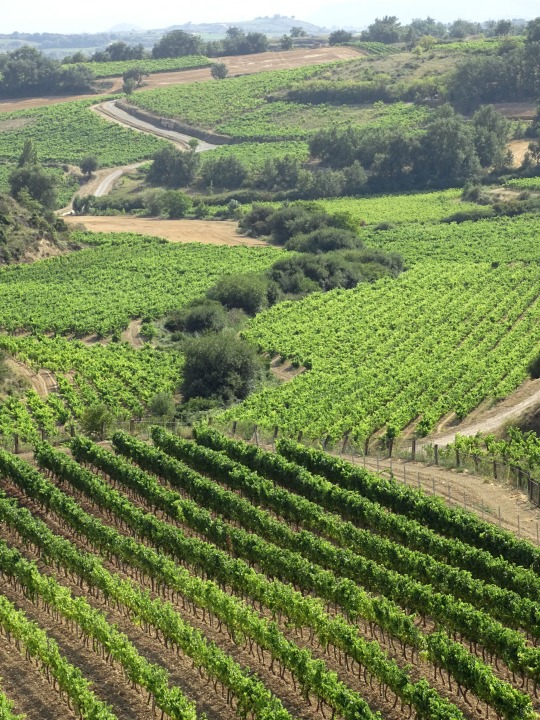
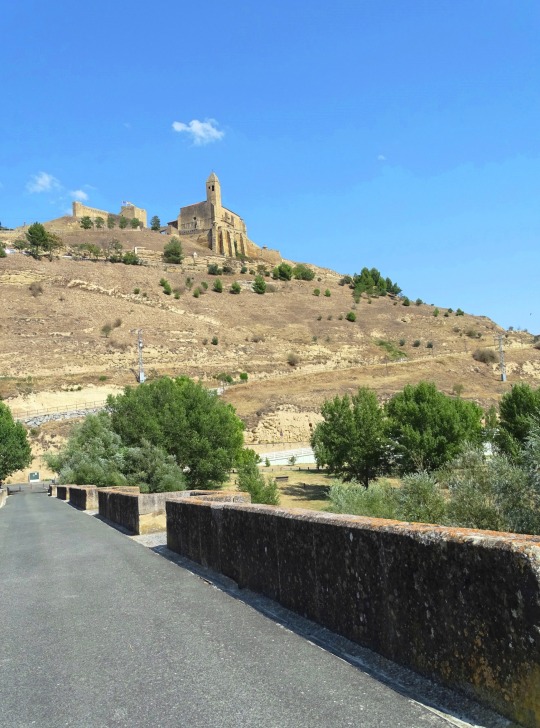



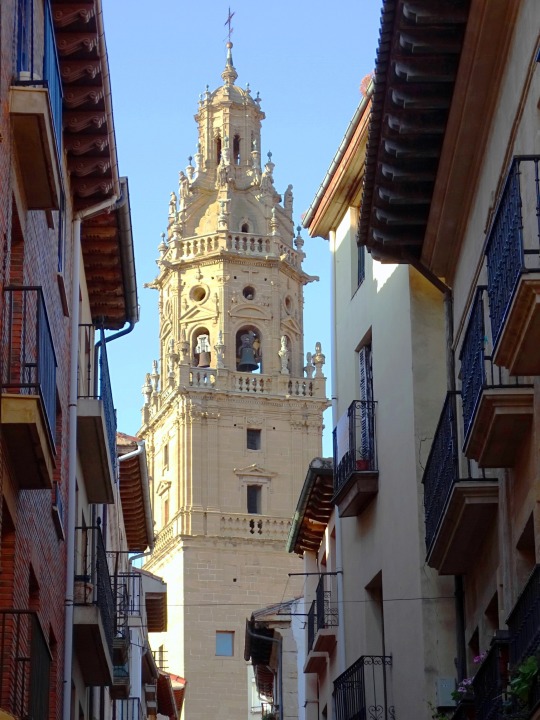
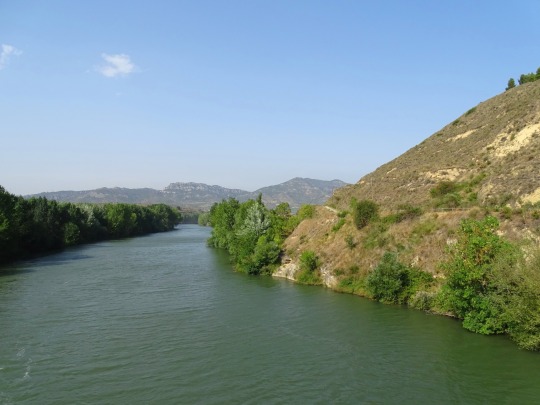


Day of La Rioja
Day of La Rioja is a public holiday in La Rioja, Spain, and is celebrated on June 9 every year. It marks the anniversary of when the autonomous community of La Rioja’s statute was approved in 1982. This beautiful picturesque region is known for its lip-smacking red wine and boasts of over 500 wineries. We firmly believe that there is no such thing as too many wineries but 500 sounds like a good number. The day is celebrated with full vigor in the region by organizing various events including exhibitions of works produced by local artists, traditional and modern music concerts, sports events, and, of course, cooking up some great dishes and washing them down with the world-famous La Rioja wine.
History of Day of La Rioja
The history of La Rioja is marked by territorial disputes and invasions. The territory of La Rioja was inhabited by the tribes of the Berones, Autrigones, and the Vascones during Roman times, while in Medieval times, it was often a disputed territory. After a Muslim Invasion in 711, La Rioja fell into the Muslim domains of Al Andalus. This was followed by more disputes and invasions, which were then followed by — you guessed it — even more disputes and invasions.
The territory was divided between the provinces of Burgos and Soria as recently as the 19th century. Even France had its say. Napoleonic forces took over the region during the Peninsular War, keeping it with the French till 1814.
Historically, La Rioja formed part of different provinces in the area but became its own province in 1833. It was called the Province of Logroño. The province was renamed La Rioja in 1980, although Logroño is still the capital city.
Today, this community forms the least populated region of Spain with over 300,000 inhabitants. It also has its own flag with the colors red, white, green, and yellow. The residents of this region take a lot of pride in their land. Other events like the Vendimia Riojana are also celebrated in the region. It is held during the third week of September in Logroño to celebrate the grape harvest with festivities, including a parade of carts and bullfights.
Day of La Rioja timeline
1550 B.C. The Iberian Peninsula
The Bronze Age begins and the El Argar civilization starts to form.
19 B.C. The Romans Take Over
Spain falls under the Roman Empire.
1479 The New Kingdom is Formed
The Kingdom of Spain is formed when Ferdinand and Isabella become king and queen.
1931 Spain As We Know It
Spain becomes a republic.
Day of La Rioja Activities
Visit La Rioja
Bring Spain home
Treat your friends
Take a trip to La Rioja to see the festivities for yourself. Bask in the Day of La Riojaculture, food, and wine that makes this region so unique.
If you cannot visit La Rioja, then bring Spain to your home. Cook up some delicacies from La Rioja like Patatas a la Riojana, beef, or pork cheeks in Rioja red wine sauce and white asparagus.
Call your family and friends over and treat them to some delicious food made in La Rioja style. Open up a bottle of wine while you are at it.
5 Facts About Spain That Will Blow Your Mind
Spanish is widely spoken
The world’s first global empire
The world’s oldest restaurant
Spain has a tooth mouse
More bars than anywhere in Europe
Spanish is the world’s second-most spoken native language.
The Spanish traveled across the world and left their mark on the Americas and also controlled the Philippines for over 300 years.
Madrid has the oldest restaurant in the world, El Restaurante Botin, which was opened in 1725.
Spain has a unique version of the popular mythical tooth mouse called ‘Ratoncito Perez.’
Spain has the highest number of bars compared to other countries in Europe.
Why We Love Day of La Rioja
The Spaniards know how to have fun
They make some great art
It is beautiful
We love any reason to have a celebration! La Tomatina and the Haro wine festival are just some of the popular festivals held in Spain.
Some of the world’s most famous painters including Pablo Picasso, Salvador Dali, Goya, El Greco, and Velázquez all came from Spain. There is nothing better than appreciating a good work of art.
It does not matter if you are into food, wine, beaches, history, art, or architecture — Spain has it all. Spain is such a popular country that in 2018 the country had more visitors than the number of people who live there!
Source
#San Vicente de la Sonsierra#Haro#puente medieval#medieval bridge#Spain#Bodegas Roda#Ebro River#Church of Santo Tomás#La Rioja#vacation#travel#Basilica of la Vega by Bernardo de Munilla and Juan de Villanueva#Day of La Rioja#DayofLaRioja#9 June#original photography#summer 2021#landscape#cityscape#countryside#vineyard#architecture#mountains#España#Northern Spain#Southern Europe#tourist attraction#landmark
0 notes
Text

640x927 Toro saliendo al ruedo. España es taurina; los antitaurinos son antiespañoles. Tan simple, tan triste.
54 notes
·
View notes
Video
youtube
Juanito Valderrama:
“El Emigrante”
(VintageMusic.es)
#españa nacional#national spain#copla#spanish pop folk#orgullososdeserespañoles#proudtobespanish#spanish bullfighting pride
11 notes
·
View notes
Photo
"Pase afaroleado de rodillas", una suerte cargada de peligro en el tercio de capote, el primero de las tres suertes del toro.

bull fight by frank1030 on Flickr.
227 notes
·
View notes
Photo




Have you ever seen this species of donkey?
It’s called the Catalan donkey (scientific name: Equus asinus var. catalana) and, as its name indicates, it’s the autochthonous donkey breed from Catalonia. Over the years, it has become an informal “national animal” of Catalonia, which started as a way to mock Spanish nationalists who put the picture of a bull everywhere. Since “donkey” is also an light insult and a kinder animal than the bulls (in Spain, feared as aggressive because of bullfighting), using a donkey as our national animal is a light-hearted joke at ourselves at the same time as it ridicules the Spanish nationalists who very take their bull as a very serious national pride symbol.

In the past, these donkeys were used in the fields of Catalonia, and so there were thousands around the country. They were exported to the Balearic Islands too, and centuries later they were taken to North America where their descendants were mixed with other donkey breeds and created the American Mammoth Jackstock that was widespread in the USA and Mexico.
In the 1960s and 1970s, when people stopped working as farmers and those who remained started using machines instead, less people used a donkey and this species became endangered almost to the point of extinction. Hundreds of them still live in Catalonia’s rural areas, and now there are efforts to not let them go extinct. For example, they are used in targeted grazing, so that they eat the underbrush in forests and so reduce the risk of fires.
Photos by Daniel Ríos Bernal (published in La Mira) taken in Fuives (Centre Mundial del Ruc Català).
205 notes
·
View notes
Photo
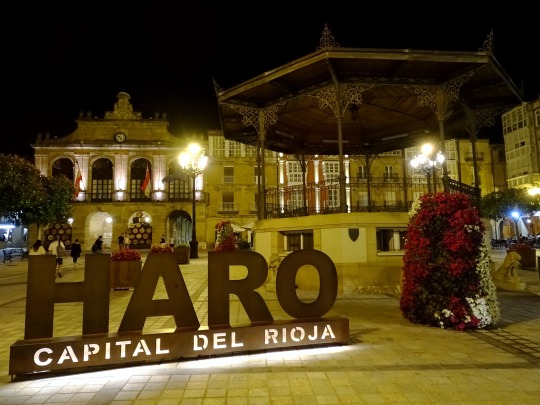
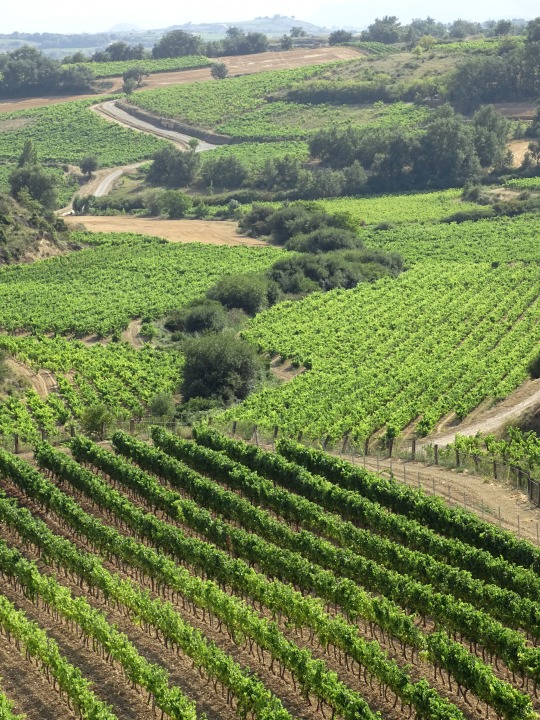
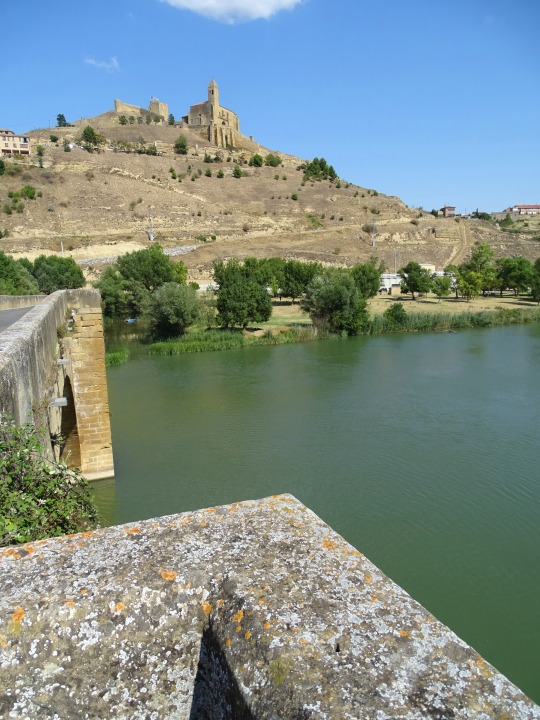




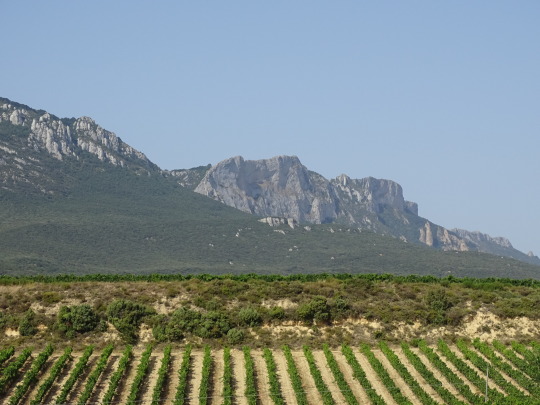
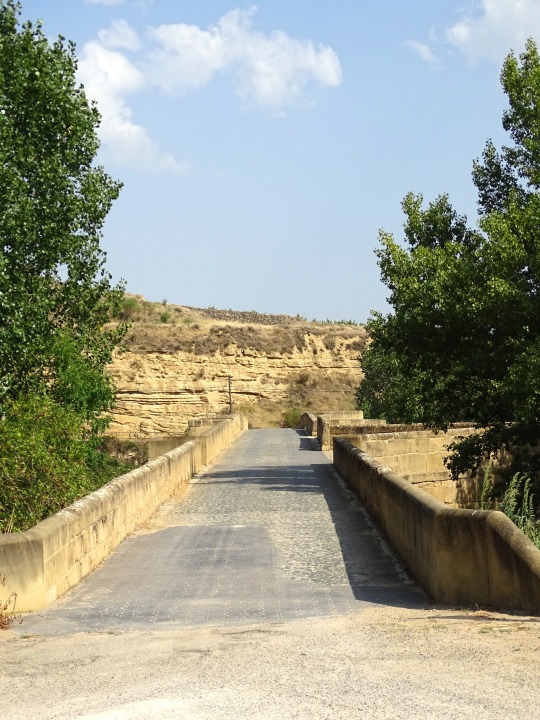
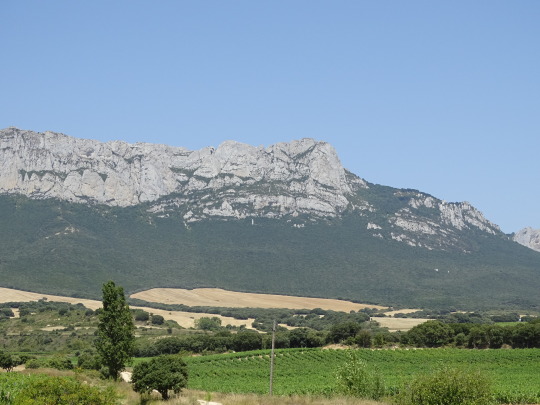
Day of La Rioja
Day of La Rioja is a public holiday in La Rioja, Spain, and is celebrated on June 9 every year. It marks the anniversary of when the autonomous community of La Rioja’s statute was approved in 1982. This beautiful picturesque region is known for its lip-smacking red wine and boasts of over 500 wineries. We firmly believe that there is no such thing as too many wineries but 500 sounds like a good number. The day is celebrated with full vigor in the region by organizing various events including exhibitions of works produced by local artists, traditional and modern music concerts, sports events, and, of course, cooking up some great dishes and washing them down with the world-famous La Rioja wine.
History of Day of La Rioja
The history of La Rioja is marked by territorial disputes and invasions. The territory of La Rioja was inhabited by the tribes of the Berones, Autrigones, and the Vascones during Roman times, while in Medieval times, it was often a disputed territory. After a Muslim Invasion in 711, La Rioja fell into the Muslim domains of Al Andalus. This was followed by more disputes and invasions, which were then followed by — you guessed it — even more disputes and invasions.
The territory was divided between the provinces of Burgos and Soria as recently as the 19th century. Even France had its say. Napoleonic forces took over the region during the Peninsular War, keeping it with the French till 1814.
Historically, La Rioja formed part of different provinces in the area but became its own province in 1833. It was called the Province of Logroño. The province was renamed La Rioja in 1980, although Logroño is still the capital city.
Today, this community forms the least populated region of Spain with over 300,000 inhabitants. It also has its own flag with the colors red, white, green, and yellow. The residents of this region take a lot of pride in their land. Other events like the Vendimia Riojana are also celebrated in the region. It is held during the third week of September in Logroño to celebrate the grape harvest with festivities, including a parade of carts and bullfights.
Day of La Rioja timeline
1550 B.C. The Iberian Peninsula
The Bronze Age begins and the El Argar civilization starts to form.
19 B.C. The Romans Take Over
Spain falls under the Roman Empire.
1479 The New Kingdom is Formed
The Kingdom of Spain is formed when Ferdinand and Isabella become king and queen.
1931 Spain As We Know It
Spain becomes a republic.
Day of La Rioja Activities
Visit La Rioja
Bring Spain home
Treat your friends
Take a trip to La Rioja to see the festivities for yourself. Bask in the culture, food, and wine that makes this region so unique.
If you cannot visit La Rioja, then bring Spain to your home. Cook up some delicacies from La Rioja like Patatas a la Riojana, beef, or pork cheeks in Rioja red wine sauce and white asparagus.
Call your family and friends over and treat them to some delicious food made in La Rioja style. Open up a bottle of wine while you are at it.
5 Facts About Spain That Will Blow Your Mind
Spanish is widely spoken
The world’s first global empire
The world’s oldest restaurant
Spain has a tooth mouse
More bars than anywhere in Europe
Spanish is the world’s second-most spoken native language.
The Spanish traveled across the world and left their mark on the Americas and also controlled the Philippines for over 300 years.
Madrid has the oldest restaurant in the world, El Restaurante Botin, which was opened in 1725.
Spain has a unique version of the popular mythical tooth mouse called ‘Ratoncito Perez.’
Spain has the highest number of bars compared to other countries in Europe.
Why We Love Day of La Rioja
The Spaniards know how to have fun
They make some great art
It is beautiful
We love any reason to have a celebration! La Tomatina and the Haro wine festival are just some of the popular festivals held in Spain.
Some of the world’s most famous painters including Pablo Picasso, Salvador Dali, Goya, El Greco, and Velázquez all came from Spain. There is nothing better than appreciating a good work of art.
It does not matter if you are into food, wine, beaches, history, art, or architecture — Spain has it all. Spain is such a popular country that in 2018 the country had more visitors than the number of people who live there!
Source
#Haro#Day of La Rioja#Statute of Autonomy#9 June 1982#40th anniversary#Spanish history#architecture#cityscape#landscape#countryside#Spain#summer 2021#original photography#Santo Domingo de la Calzada#vineyard#wine country#San Vicente de la Sonsierra#medieval bridge#Ebro River#Bodegas Roda#Cathedral of Santo Domingo de la Calzada#mountains#Southern Europe#Northern Spain#España
7 notes
·
View notes
Text
Spanish Bullfighting Pride. I'm proud of bullfighting in and from Spain.



#españa#espana#español#espanol#spanish bullfighting pride#photographers on tumblr#original photographers#lensblr#imiging#luxlit#bullfighting
19 notes
·
View notes
Text
The silver mines of Potosí
[from Open Veins of Latin America: Five Centuries of Pillage of a Continent by Eduardo Galeano]
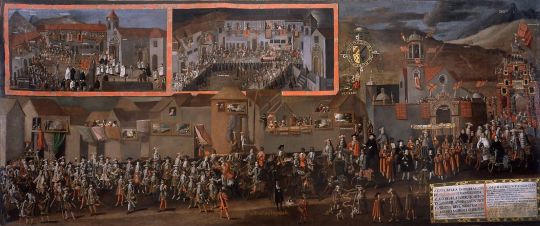
Entrada del Virrey arzobispo Morcillo en Potosí (1718), by Melchor Pérez de Holguín
They say that even the horses were shod with silver in the great days of the city of Potosí. The church altars and the wings of cherubim in processions for the Corpus Christi celebration in 1658, were made of silver: the streets from the cathedral to the church of Recoletos were completely resurfaced with silver bars. In Potosí, silver built temples and palaces, monasteries and gambling dens; it prompted tragedies and fiestas, led to the spilling of blood and wine, fired avarice, and unleashed extravagance and adventure. The sword and the cross marched together in the conquest and plunder of Latin America, and captains and ascetics, knights and evangelists, soldiers and monks came together in Potosí to help themselves to its silver. Molded into cones and ingots, the viscera of the Cerro Rico—the rich hill—substantially fed the development of Europe. “Worth a Peru” was the highest possible praise of a person or a thing after Pizarro took Cuzco, but once the Cerro had been discovered Don Quixote de la Mancha changed the words: “Worth a Potosí,” he says to Sancho. This jugular vein of the viceroyalty, America’s fountain of silver, had 120,000 inhabitants by the census of 1573. Only twenty-eight years had passed since the city sprouted out of the Andean wilderness and already, as if by magic, it had the same population as London and more than Seville, Madrid, Rome, or Paris. A new census in 1650 gave Potosí a population of 160,000. It was one of the world’s biggest and richest cities, ten times bigger than Boston—at a time when New York had not even begun to call itself by that name.
Wealth flowed like water. The Holy Roman Emperor, Charles V, showed his gratitude by bestowing on Potosí the title of Imperial City and a shield with the inscription: “I am rich Potosí, treasure of the world, king of the mountains, envy of kings.” The Cerro was the most potent of magnets. Hard as life was at its base, at an altitude of nearly 14,000 feet the place was flooded with treasure hunters who took the bitter cold as if it were a tax on living there. Suddenly a rich and disorderly society burst forth beside the silver, and Potosí became “the nerve center of the kingdom”. By the beginning of the seventeenth century it had thirty-six magnificently decorated churches, thirty-six gambling houses, and fourteen dance academies. Salons, theaters, and fiesta stage-settings had the finest tapestries, curtains, heraldic emblazonry, and wrought gold and silver; multicolored damasks and cloths of gold and silver hung from the balconies of houses. Silks and fabrics came from Granada, Flanders, and Calabria; hats from Paris and London; diamonds from Ceylon; precious stones from India; pearls from Panama; stockings from Naples; crystal from Venice; carpets from Persia; perfumes from Arabia; porcelain from China. The ladies sparkled with diamonds, rubies, and pearls; the gentlemen sported the finest embroidered fabrics from Holland. Bullfights were followed by tilting contests, and love and pride inspired frequent medieval-style duels with emerald-studded, gaudily plumed helmets, gold filigree saddles and stirrups, Toledo swords, and richly caparisoned Chilean ponies.
In 1579 the royal judge Matienzo complained: “There is never a shortage of novelty, scandal, and wantonness.” Potosí had at the time 800 professional gamblers and 120 famous prostitutes, whose resplendent salons were thronged with wealthy miners. In 1608 Potosí celebrated the feast of the Holy Sacrament with six days of plays and six nights of masked balls, eight days of bullfights and three of fiestas, two of tournaments and other dissipations.

Cerro Rico del Potosi, the first image in Europe. Pedro Cieza de León, 1553
While metals flowed unceasingly from Latin American mines, equally unceasing were the orders from the Spanish Court granting paper protection and dignity to the Indians whose killing labor sustained the kingdom. The fiction of legality protected the Indian; the reality of exploitation drained the blood from his body. From slavery to the encomienda of service, and from this to the encomienda of tribute and the regime of wages, variants in the Indian labor force’s juridical condition made only superficial changes in the real situation. The Crown regarded the inhuman exploitation of Indian labor as so necessary that in 1601 Philip III, banning forced labor in the mines by decree, at the same time sent secret instructions ordering its continuation “in case that measure should reduce production.”
In three centuries Potosí’s Cerro Rico consumed 8 million lives. The Indians, including women and children, were torn from their agricultural communities and driven to the Cerro. Of every ten who went up into the freezing wilderness, seven never returned. In their communities the Indians saw “many afflicted women returning without husbands and with many orphaned children” and they knew that “a thousand deaths and disasters” awaited them in the mines. The Spaniards scoured the countryside for hundreds of miles for labor. Many died on the way, before reaching Potosí, but it was the terrible work conditions in the mine that killed the most people. Soon after the mine began operating, in 1550, the Dominican monk Domingo de Santo Tomás told the Council of the Indies that Potosí was a “mouth of hell” which swallowed Indians by the thousands every year, and that rapacious mine owners treated them “like stray animals.” Chiefs of Indian communities had to replace the constantly dying mitayos with new men between eighteen and fifty years old. The mitayos’ jail—a shapeless mass of ruins—can still be seen at the entrance to Potosí.
Freezing outdoor temperatures alternated with the infernal heat inside the Cerro. The Indians went into the depths “and it is common to bring them out dead or with broken heads and legs, and in the mills they are injured every day.” The mitayos hacked out the metal with picks and then carried it up on their shoulders by the light of a candle. Outside the mine they propelled the heavy wooden shafts in the mill or melted the silver on a fire after grinding and washing it.
The mita labor system was a machine for crushing Indians. The process of using mercury to extract silver poisoned as many or more than did the toxic gases in the bowels of the earth. It made hair and teeth fall out and brought on uncontrollable trembling. The victims ended up dragging themselves through the streets pleading for alms. At night 6,000 fires burned on the slopes of the Cerro and in these the silver was worked, taking advantage of the wind that the “glorious Saint Augustine” sent from the sky. Because of the smoke from the ovens there were no pastures or crops for a radius of twenty miles around Potosí and the fumes attacked men’s bodies no less relentlessly.
— Eduardo Galeano, Open Veins of Latin America: Five Centuries of Pillage of a Continent (transl. Cedric Belfrage, Monthly Review Press, 1973; abridged excerpts)
#Open Veins of Latin America: Five Centuries of Pillage of a Continent#long post#Eduardo Galeano#theory#the city speaks#the ecstasy of gold#the gambler's face cracks into a grin#Potosí#Bolivia#no tears for the creatures of the night
72 notes
·
View notes